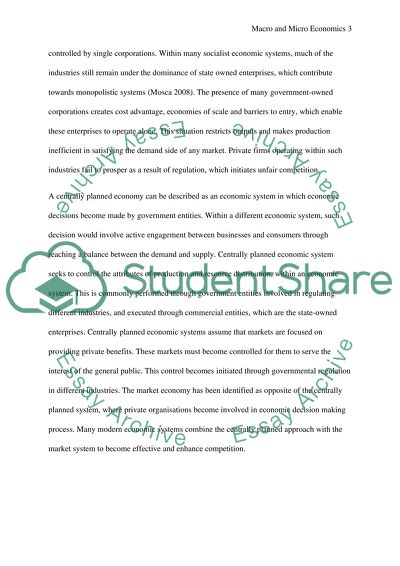Cite this document
(“The transition from a centrally planned economy to a free market Essay”, n.d.)
The transition from a centrally planned economy to a free market Essay. Retrieved from https://studentshare.org/macro-microeconomics/1626622-the-transition-from-a-centrally-planned-economy-to-a-free-market-involves-state-owned-enterprises-being-privatized-but-economists-debate-this-is-actually-beneficial-to-the-countrys-economy-discuss-this-statement-from-experience-of-china-and-russia
The transition from a centrally planned economy to a free market Essay. Retrieved from https://studentshare.org/macro-microeconomics/1626622-the-transition-from-a-centrally-planned-economy-to-a-free-market-involves-state-owned-enterprises-being-privatized-but-economists-debate-this-is-actually-beneficial-to-the-countrys-economy-discuss-this-statement-from-experience-of-china-and-russia
(The Transition from a Centrally Planned Economy to a Free Market Essay)
The Transition from a Centrally Planned Economy to a Free Market Essay. https://studentshare.org/macro-microeconomics/1626622-the-transition-from-a-centrally-planned-economy-to-a-free-market-involves-state-owned-enterprises-being-privatized-but-economists-debate-this-is-actually-beneficial-to-the-countrys-economy-discuss-this-statement-from-experience-of-china-and-russia.
The Transition from a Centrally Planned Economy to a Free Market Essay. https://studentshare.org/macro-microeconomics/1626622-the-transition-from-a-centrally-planned-economy-to-a-free-market-involves-state-owned-enterprises-being-privatized-but-economists-debate-this-is-actually-beneficial-to-the-countrys-economy-discuss-this-statement-from-experience-of-china-and-russia.
“The Transition from a Centrally Planned Economy to a Free Market Essay”, n.d. https://studentshare.org/macro-microeconomics/1626622-the-transition-from-a-centrally-planned-economy-to-a-free-market-involves-state-owned-enterprises-being-privatized-but-economists-debate-this-is-actually-beneficial-to-the-countrys-economy-discuss-this-statement-from-experience-of-china-and-russia.


